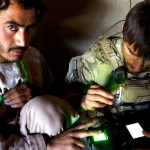
There is currently a low threat of damaging cyber attacks against the U.S. energy infrastructure according an intelligence assessment released by the Department of Homeland Security and Industrial Control Systems Computer Emergency Response Team (ICS-CERT) in January. While “advanced persistent threat (APT) nation-state cyber actors are targeting US energy sector enterprise networks,” these activities are conducted primarily in support of cyber espionage focused primarily on “acquiring and maintaining persistent access to facilitate the introduction of malware” in the event of “hostilities with the United States.”





